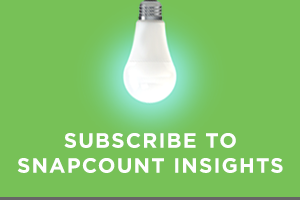 Typically, when organizations have improved energy efficiency in their facilities, it’s all about the bottom line: less energy used = less money spent.
Typically, when organizations have improved energy efficiency in their facilities, it’s all about the bottom line: less energy used = less money spent.
Today, the picture has gotten a bit bigger. Customers aren’t just looking to reduce energy at their facilities — they’re also setting carbon reduction initiative targets and looking at their overall sustainability goals. The question is: Where do you and your business come in?
Energy Efficiency Vs. Sustainability
The UN World Commission on Environment and Development defines sustainable development as “development that meets the needs of the present without compromising the ability of future generations to meet their own needs.”
Fair enough, but what does that look like in our world?
It translates into the idea of helping customers improve energy efficiency, but not just as a one-and-done carbon reduction task to check off their list. Instead, it’s about looking at the client’s complete picture and helping them figure out how they can meet their sustainability and their business goals.
Because as it turns out, sustainability practices are no longer a nice-to-have.
The Industry Shift: Regulations and Benefits
Not too long ago, companies liked the idea of sustainability. But funding it? That was another matter — there were always other priorities.
Just in the past several months, however, we’ve seen things absolutely explode. Among an increasing number of large companies, we’re seeing decarbonization moving up into all the discussions and planning, partly due to increased regulatory efforts to combat climate change. With so many forces at play, all turning the industrial and commercial tide toward sustainability, we’re even seeing businesses dedicate funding and manpower specifically for these initiatives.
Sustainability: Carrot vs. Stick
Regulations and rebates can often be the push businesses need to get serious about sustainability, but there are plenty of other benefits for your clients that are worth mentioning:
- A better reputation with consumers: Forbes reports that 88% of consumers will be more loyal to a company that supports social or environmental issues, and 34% of consumers are willing to pay more for sustainable products and services.
- A better reputation with investors: Roughly 89% of investors considered Environmental, social, and governance (ESG) issues in some form as part of their investment approach in 2022.
- A better reputation with employees: A Fast Company survey found that more than 70% of employees at large U.S. companies are likely to choose to work at a company with a strong environmental agenda and nearly 70% said that if a company had a strong sustainability plan, it would affect their decision to stay with that company long term.
Selling Clients on Sustainability Projects
The big secret? It’s usually not selling clients on sustainability that’s hard – it’s selling them on the project. For many organizations, the idea of overhauling their energy practices is overwhelming, both from an operational and a financial perspective.
Your job is to make sustainability as easy for them as possible. Here’s how:
Earn their trust
A straightforward retrofit that trims the energy bills is one thing. But if a client wants to make serious inroads toward their sustainability goals, they don’t want to waste time and money on someone who can’t get them there.
It’s a much longer selling cycle than going after standalone projects, so be patient. You’re looking at long-term energy partnerships. Which means you’re going to need to ask more questions about their ultimate goals, what they want to accomplish and what it looks like.
And then, you need to be ready with answers and advice. We can point to what different states are doing, what governments are doing and planning, and what energy-efficiency mandates are coming down the road. If you let them know, “Hey, this is important to your company and here’s why, and by the way, we’re also researching what Europe is doing and how they’re far ahead of the curve, and we can help you stay ahead of your goals,” that’s when clients start to turn to you not just for a job, but for consultation and guidance.
If you become a partner and you can genuinely help them with their ideas and the marketplace, you become a valuable extension of that company.
Work with their needs
“It’s just not in our capital budget to do it all at once.” “We don’t want to take on any more debt.” “Maybe next year.”
Sound familiar?
When a customer spends a billion dollars in electricity a year, it’s frustrating for you and for them to only be able to chip away at it with one-off projects as the budget allows. We’ve had clients who could have paid off their project several times over in the time it took for them to finally sign on the dotted line. But, this isn’t uncommon in larger or enterprise-level organizations: It’s a big budgetary boat to turn around.
This is where old-school thinking has to make way for some flexibility. We’ve been leading with Energy-as-a-Service and funding options, which lets us come in and offer a complete sustainability program without the client having to use their capital budget. We provide the funding, monitoring and verifying, and guarantee the savings (which ultimately pays for the service). So instead of having to pick and choose, our contacts can go back to the decision-makers and say, “This company can get us closer to our sustainability goals, and it’s all taken care of as a service.” It may still take a few conversations to get the higher-ups to envision how it’ll all work out for them, where it’s a newer idea, but eventually someone goes, “This makes sense, why are we not doing this?” Just be patient, hang in there, and eventually, most of them do come around.
Meet them where they are
Is “green” a dirty word? In today’s heavily charged political climate, it sometimes can be.
Perceptions around climate change and environmentally friendly initiatives can vary widely, and you may encounter some pushback. While most clients are coming around to the idea that sustainability is a net good, it’s important to let them get there on their own and not drive the agenda.
Instead, go into discussions with the goal of sharing information. Let clients know what you’ve learned, what’s changed, what other regions are doing, and what you think makes the most sense for their business. Again, being helpful, asking questions, and offering expert consultation will go a long way toward earning trust.
To help those companies or decision-makers that may feel like embracing sustainability means sacrificing their core values, keep the focus on efficiency. Everyone likes saving money, and any sustainability initiative related to energy efficiency will do that.
Digitizing efficiency data can go a long way to keeping the focus on the bottom-line benefits of a project. An energy retrofit audit tool like SnapCount can break down the efficiency of various retrofits so a client can see the hard data and the cold hard cash saved.
If you start with an audit of one project or building and show the impact of the retrofit, it will be easy to demonstrate how those savings would be multiplied if done company-wide and easier to propose a full efficiency project without ever calling it sustainability.
Your Sustainable Energy Retrofitting Business
Environmental concerns are growing; renewable energy is on the rise; consumers, employees, and investors are demanding more of companies; and more legislation will come.
If your clients aren’t thinking about improving their sustainability now, they will be. Soon.
Now is the time to build your sustainability program and prove yourself capable of giving clients not just a great project, but the expert, patient, long term guidance and help they need to reach their sustainability goals and grow their business.






Share this post: